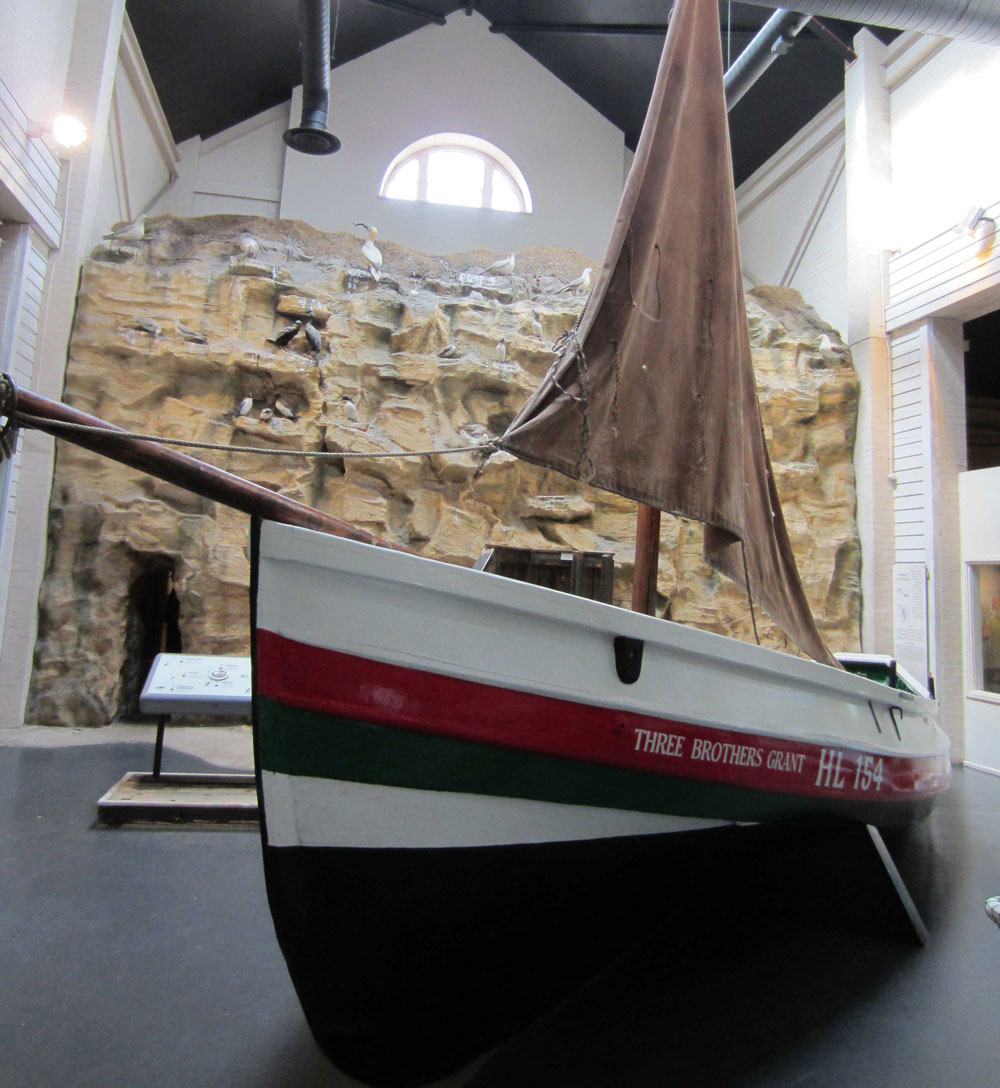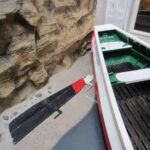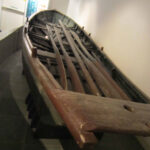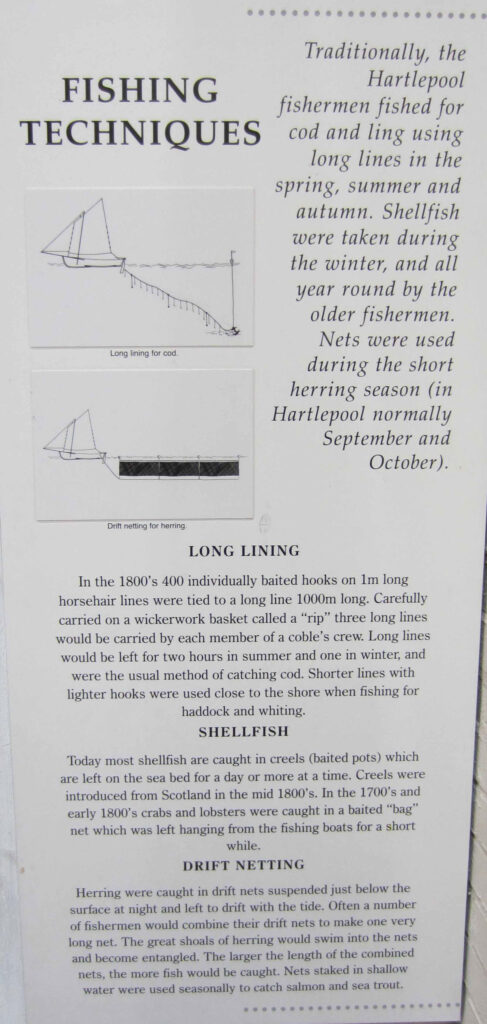
Earlier this year I helped my mate deliver his yacht ‘Tintin’ from the Hamble to Peterhead. We were lucky with the weather after starting in April. It’s quite early in the season to start yachting in UK. Luck with light winds enabled us to progress rapidly along the south coast and across the Thames. We left the boat in Lowestoft for a break, after returning awaited a day for an easterly gale to blow out. Cold but light northerly winds then allowed us to continue north. The Wash was damp, misty and gray. Luckily the light winds continued and the sun returned; within two more days we had reached Hartlepool via Grimsby and Scarborough. Finally we’d arrived at what I call ‘the Coble coast’…
The Coble (or as my Yorkshire mother would pronoun it! Cooble) is an usually distinctive shaped craft. An inshore fishing boat that’s still used on this coast (albeit nowadays as a motorized version!). Roughly from Flamborough Head in Yorkshire as far north as Northumberland you can still spot them. This NE coast of England is difficult to work if you’re fishing. Largely because it hasn’t many safe havens; much of the coast has high cliff’s and rocks. Small villages with gaps in the cliffs became local fishing centres. It’s very often bl…y cold here, too!
 Coble’s were developed by the local fishermen to allow them to launch and land their craft under sail from exposed beaches. With prevailing winds from the west inshore boats had to be seaworthy and able to beat home even in strong conditions. During the winter strong cold NE winds are also a big feature here. Thus boat’s had also to deal with leaving or returning in onshore winds often with breaking waves.
Coble’s were developed by the local fishermen to allow them to launch and land their craft under sail from exposed beaches. With prevailing winds from the west inshore boats had to be seaworthy and able to beat home even in strong conditions. During the winter strong cold NE winds are also a big feature here. Thus boat’s had also to deal with leaving or returning in onshore winds often with breaking waves.
Over a period of time an interesting clinker (lapstrake) boat developed with a high moderately curved stem and rather pronounced forward sheer. A round deep forefoot with fine entry enabled the craft to weather the short steep North Sea waves. This along with a deep rudder prevented most leeway without having to fit a centerboard. Any centreboard would jamb with stones in the slot after launching and the case takes up valuable space needed for fishing gear. Many years ago I sailed a replica Coble and was extremely surprised at the lack of leeway and the boat’s fine windward performance!
The aft part of hull was shallow with flat floors and a small horseshoe shaped transom stern. Two side keels (called drafts) extended aft from about a mid-ships to protect the hull as the boat was launched bow first from the beach. Forward flare gave the bows lift in big seas and the high shape stopped seawater breaking aboard.
Coble’s topsides have quite a lot of tumblehome i.e.curve inwards (rather like the early yachts I raced in the 60’s). This tumblehome helps increase the amount these open craft can heel before filling with water. Where as on ‘60’s racing yachts tumblehome helped improve the yachts, topside’s, windward airflow creating less drag!).
The craft’s strake’s are unusually wide for clinker planking and great skill was needed to steam bend the timbers and build one. A fishing coble’s evocative shape is beautiful; yet completely purpose designed for the job in hand.
 These craft ranged in size from 10 to 40 ft long and usually used a single dipping lug sail fitted with several reefing points. In the age of sail this lug rig was popular with many inshore fishermen all round the British coast; due to it’s efficiency. At eight I started my sailing with a standing lug sailed clinker dinghy. After stopping going round in circles I remember how efficiently the rig worked!
These craft ranged in size from 10 to 40 ft long and usually used a single dipping lug sail fitted with several reefing points. In the age of sail this lug rig was popular with many inshore fishermen all round the British coast; due to it’s efficiency. At eight I started my sailing with a standing lug sailed clinker dinghy. After stopping going round in circles I remember how efficiently the rig worked!
Coble sails were hoisted by a single halyard which was then used to help stay the mast. The rope falls from the halyard were jammed between the gunwale and the standing part of the rope. This meant a quick pull was all that was needed to drop the sail quickly during squally conditions. The tack of this square shaped sail was hooked onto a bowline which was led forward onto the windward bows. It helped keep the luff of the sail taut and point well to windward. Bigger boats sometimes set a jib on the end of a bowsprit. Working under sail all fishermen need to land their catch fast before it spoils.
A young woman Grace Darling (1815-42) and her lighthouse keeper father inspired Victorian Britain. Massively helping promote the Royal National Lifeboat Institution (RNLI) which had started in 1824.
They risked there own lives to save others when she saw S S Forfarshire (an early Paddle Steamer) wrecked on Big Harcar Rock in the Farne islands during a storm. Rowing out in their open Coble and rescuing nine of the survivors clinging to the rocks. When news of Grace’s deed spread her name became forever associated with bravery, selflessness and a need to help others in distress.
It’s wonderful to see this iconic shaped boat is still used on this NE coast by fisherman. They understand that the Coble’s traditional hull shape still gives them great durability and sea keeping qualities.




